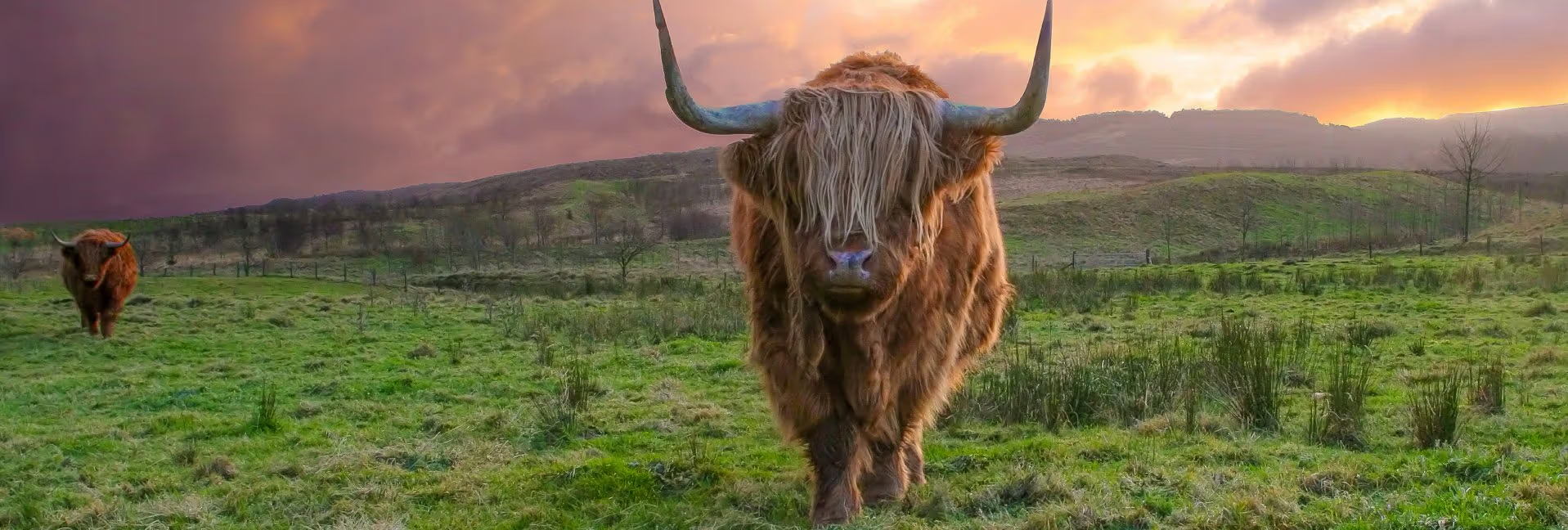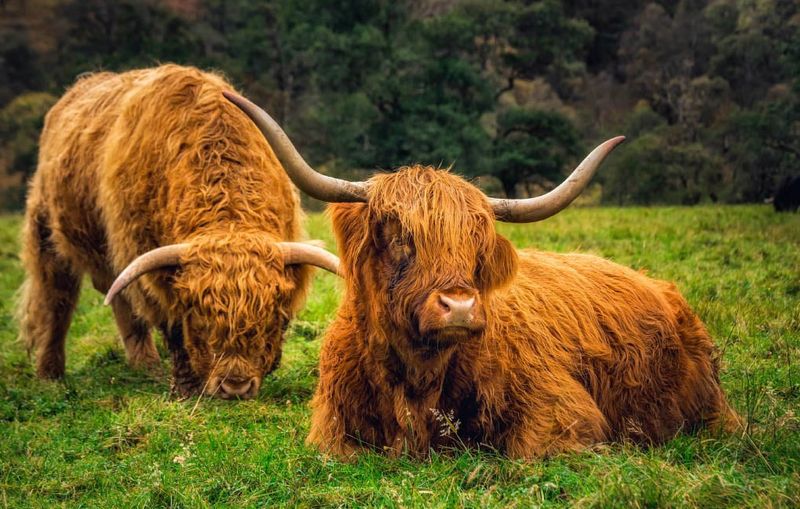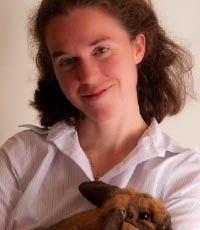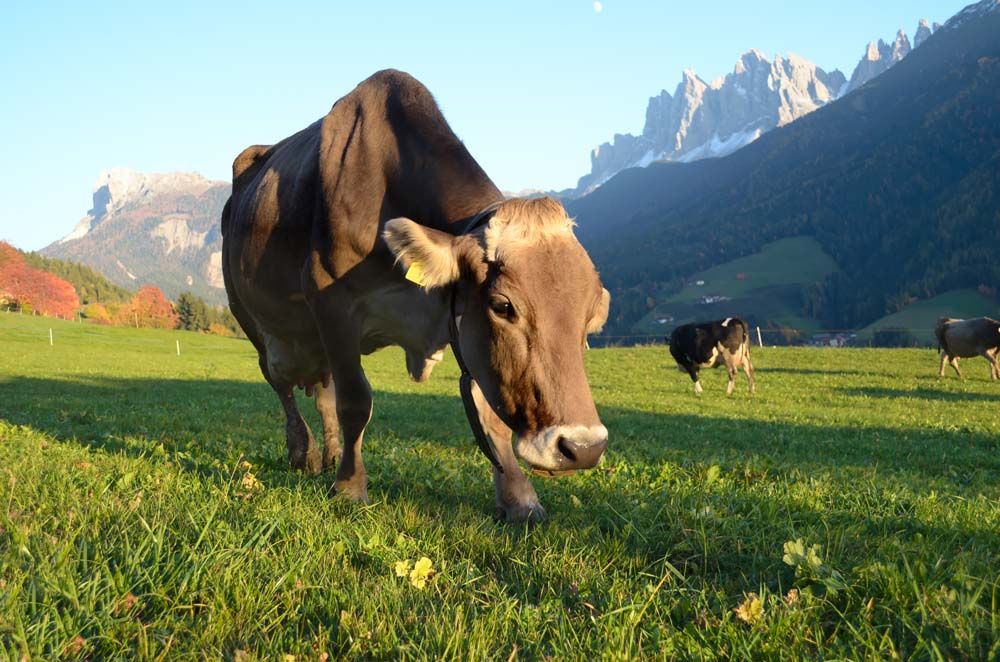7 Reasons We Love Highland Cattle


First, let’s announce some good news for Highland cattle! The Livestock Conservancy, an organization devoted to protecting endangered livestock breeds from extinction, released its 2019 Conservation Priority List in May, and with this list came the exciting announcement that Highland cattle have officially “graduated” off of the Conservation Priority List.
According to The Livestock Conservancy, the global population of Highland cattle now exceeds 25,000 and promotion efforts continue.
It’s easy to see why people like Highland cattle. They’re wooly, they’re hardy, and they have horns! Plus, they possess a quiet, easy-going temperament and make fantastic ornamental (as well as productive) livestock.
Tipping the scales at 1800 pounds for bulls and 1110 for cows, this medium-sized cattle breed is versatile enough to find a use on just about any farm. Need some more reasons to consider them? We’ve rounded up 7 things we love about this beloved cattle breed, so let’s explore.

1 They’ve withstood the test of time
What cattle breed do you suppose has the longest history as a registered animal? Yep, it’s the Highland, which has been recorded in the Highland Cattle Herd Book since 1884 (or 1885, depending on sources). But the origins of the breed far predate the publication of a formal herd book; there is archeological evidence of the Highland cattle breed dating back as far as the 6th century—some 1500 years ago. Clearly, a breed that has existed for that long must have a lot of positive attributes working for it.
2 They’re hardy
They’re not called Highlands for nothing. The breed originates from the mountainous, cold, windy, and wet region of Scotland known as the Highlands, and centuries of life in those challenging conditions have resulted in the breed we know today: a cattle breed that is very hardy and not only survives in harsh weather conditions, but actually thrives. (Because of their coats, however, they may not be as well suited to warmer climates.)
Highland cattle are browsers, and thus capable of supplementing a traditional pasture and forage diet with other edible plants—they’ve even be used to help clear property of dense brush. But besides their natural hardiness, Highland cattle offers a related attribute which is just as beneficial: they’re a long-lived breed, staying productive late into life.
3 Those amazing coats
Part of the key to the Highland’s hardiness is its impressive wooly coat. It’s a double coat, with a softer and finer layer underneath a longer, tougher top layer. This double coat is capable of keeping the cattle warm even in intense weather conditions. In fact, the coat performs so well that it may be the reason why Highland cattle don’t require a large fat supply, meaning that there will be more useable meat (with excellent marbling qualities) per pound of body weight.
The double coat also helps to give the Highland its distinctive “wavy” appearance. They really do look as though they’ve just stepped out of the Arctic!
4 Those cool horns
One of the Highland’s most distinctive characteristics is its impressive set of horns. While not as long as, say, a Texas Longhorn’s eight-foot span, the Highland nevertheless sports impressive horns that may reach up to three or four feet from tip to tip. If you find the “longhorn” look appealing, Highlands may be just the cattle for you. Both the bulls and cows have horns, although there tends to be a distinction in how the horns grow, with bulls possessing fairly straight and level horns and cows producing horns with more of an upright curve.
In keeping with their hardiness and tolerance for cold weather, the Highlands use their horns as a tool in winter to help scrape away snow to find grass underneath. These are some clever cattle!
5 They’re a combination of two strains
Once upon a time, there were two strains of cattle that would eventually become the Highland breed we know today. One of the strains was black and lived on smaller islands, and was called “Kyloe,” because cattle farmers on the islands had to swim their livestock across the sea straits, which were known as “kyloes.” The other strain, hailing from the Scottish mainland, was red and a bit larger. Eventually, the two distinct strains were crossbred and combined into the single Highland breed that we know and love today.
The American Highland Cattle Association recognizes seven colors: red, black, brindle, yellow, dun, white, and silver.

6 They’re docile
While Highland cattle are large animals that require a great deal of respect to handle safely, they generally possess an easy-going temperament, usually staying calm and not becoming overly upset about most day-to-day happenings. But make no mistake—this is still an athletic breed, capable of quick movements when they want to.
7 They can double as a dairy breed
While Highland cattle are primarily recognized as a beef breed, they nevertheless can potentially be put to use as a family milk cow. Naturally, milk production from a Highland cow won’t compete with that of a dedicated dairy breed, but Highland milk is rich and possesses a high butterfat content. The calves like it, too!
Tags:Country Critters

Acreage Life is part of the Catalyst Communications Network publication family.














